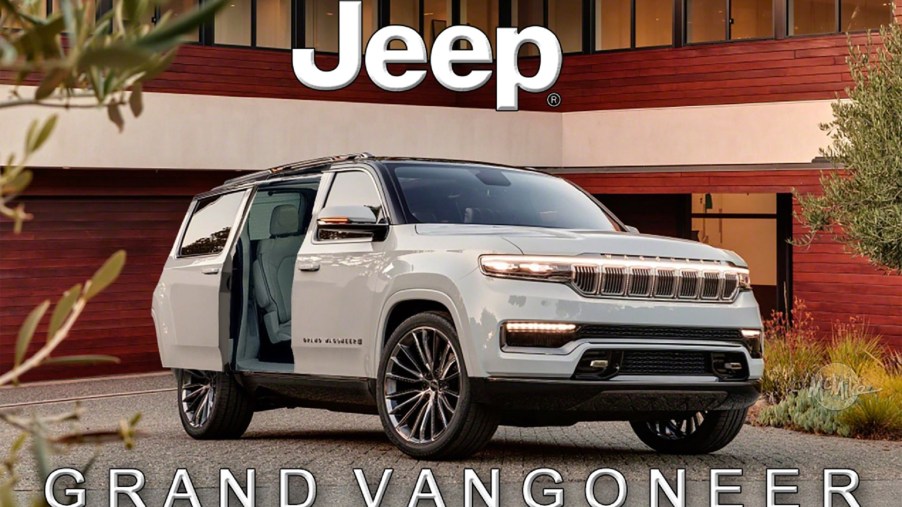
Why Don’t SUVs Have Sliding Doors?
Ever since the Jeep Grand Wagoneer’s big unveiling, questions and critiques have swirled around the luxury 3-row SUV. Why does it look that way? Where’s the wood paneling? Will it actually be a good luxury SUV? One Twitter user, though, helped trigger a question that goes beyond just the Jeep Grand Wagoneer. And that question is, why don’t SUVs have sliding doors?
The Jeep Grand Wagoneer…er, ‘Grand Vangoneer’
The Twitter user in question, @ItsMcMikeTime, is known for their extensive and entertaining use of Photoshop on production vehicles. They’ve created 6-wheeled Isuzu Vehicrosses, lifted crossover-style Nissan Zs, and Pontiac-grille Ferrari Enzos.
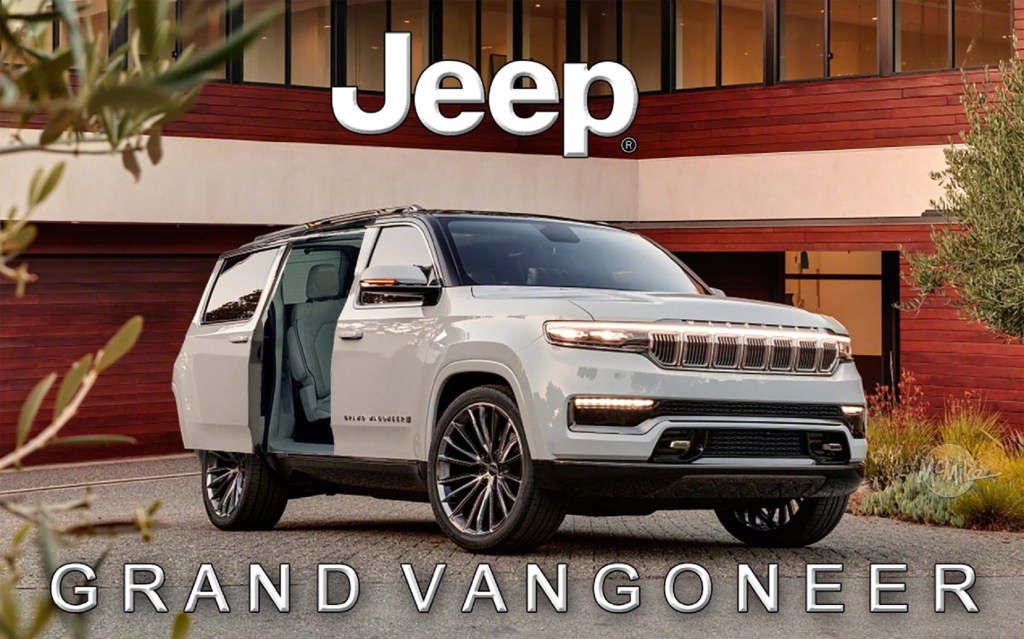
And recently, @ItsMcMikeTime—who gave us permission to use this image—tweeted a Photoshop of a Jeep Grand Wagoneer. The resulting vehicle is dubbed the ‘Jeep Grand Vangoneer.’ And, as you can see, it’s basically the Grand Wagoneer concept with sliding rear doors.
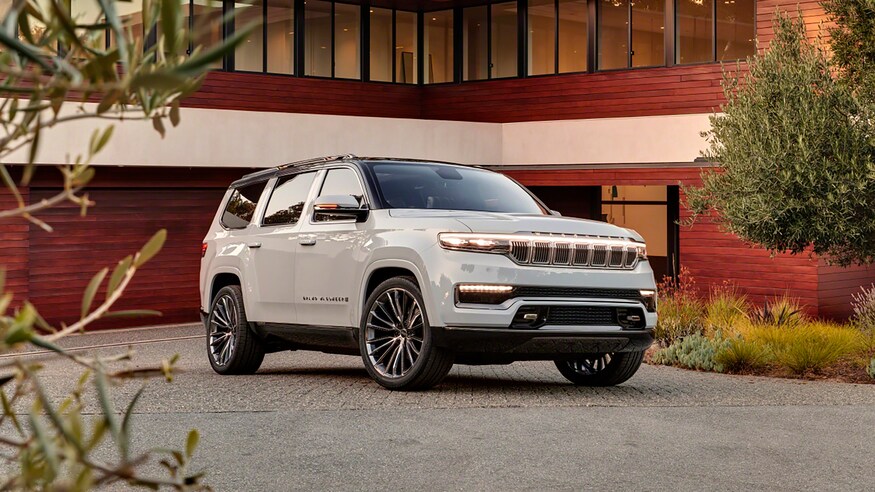
Naturally, this is just a Photoshopped image. And while the Jeep Grand Wagoneer shown recently is a concept, that’s due to the SUV’s powertrains, Motor Trend reports. The looks—which admittedly, do have a hint of wood—are here to stay.
However, @ItsMcMikeTime’s tweet raises an interesting question. The Jeep Grand Wagoneer isn’t the only 3-row SUV, but SUVs also aren’t the only 3-row vehicles available. Minivans also have 3 rows of seats and are in many ways more practical than an SUV. So why are sliding doors a van staple, but not on SUVs or other kinds of vehicles?
Pros and cons of sliding doors
Sliding doors do have several benefits over conventional doors, Jalopnik and The New York Times explain.
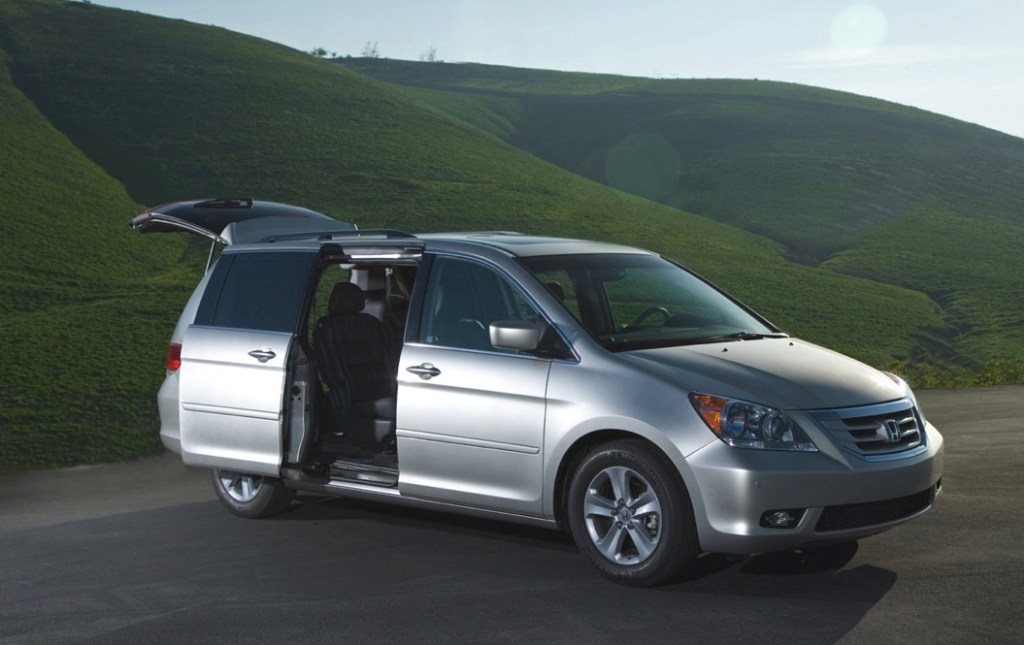
Firstly, sliding doors don’t open as wide as conventional ones. That’s extremely beneficial if you’re trying to access the vehicle in a crowded parking lot or a busy street. Plus, it means you won’t accidentally hit the car parked next to you, or create a barrier for a passing cyclist.
Secondly, sliding doors have larger openings than other doors. For cargo vans, that makes it easier to get items in and out of the storage area. There’s a similar benefit to minivans, only with passengers instead of cargo. That matters especially for 3-row vehicles, which sometimes struggle with back-row access.
However, they’re not without some drawbacks. For one, sliding doors don’t work with a conventional B-pillar. That means they have to be reinforced, or the body structure changed, to ensure proper passenger safety, especially from side impacts.
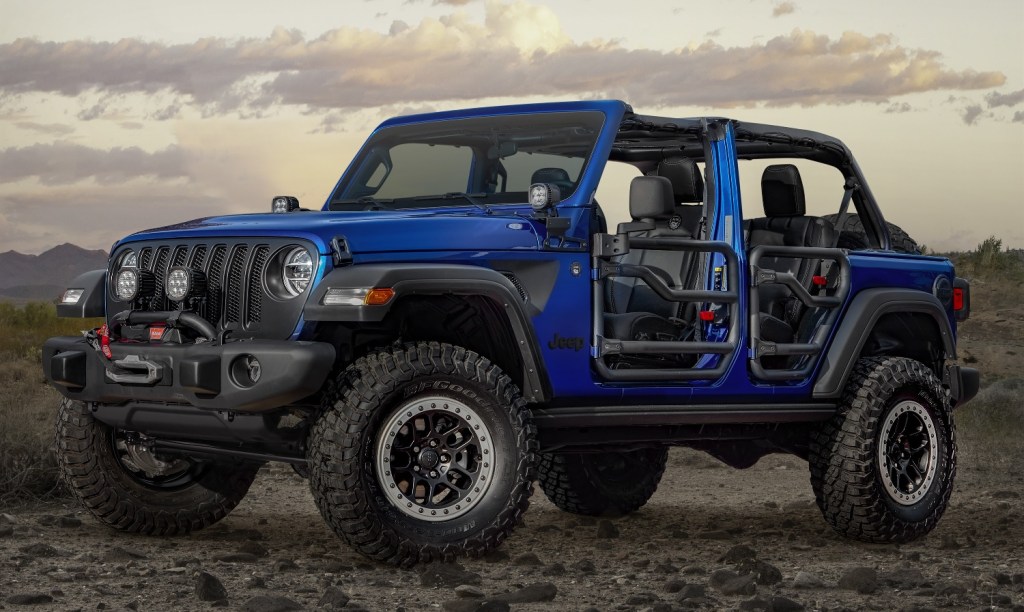
Speaking of pillars, that larger opening could be detrimental to body-on-frame SUVs, especially ones with off-road aspirations like the Jeep Grand Wagoneer, in another way. The larger the door openings, the less metal adding to the frame’s rigidity. True, the Wrangler and Ford Bronco have removable doors. But the openings themselves aren’t as large as, say, the ones for the Honda Odyssey’s sliding doors. And without that B-pillar, it’s even harder to keep the structure’s stiffness intact.
The other downside to sliding doors doesn’t involve safety or practicality, though. It has to do with why they also don’t appear on crossovers: appearance.
Why don’t crossovers have them?
Although many automakers label their crossovers ‘SUVs,’ the terms aren’t synonymous. SUVs, like the Jeep Grand Wagoneer and Toyota 4Runner, are body-on-frame vehicles. It’s why they can better-resist the forces involved in off-roading, Autotrader explains.
In contrast, crossovers ride on car-based platforms. For example, the Honda Pilot shares many components with the Accord, Autotrader explains. The Pilot’s platform also underpins the Ridgeline truck and, most importantly for our sliding door discussion, the Odyssey minivan.
So, theoretically, crossovers could be designed with sliding doors. They’d have the same off-roading downsides, but they’d also have the same practicality benefits. But, although the Pilot can handle a bit of off-roading, Truck Trend reports, crossovers aren’t exactly tackling Moab. They’re mainly used for on-pavement tasks. Arguably, sliding doors would be a great benefit to crossovers.
In fact, the Tesla Model X’s vaunted ‘falcon-wing’ doors were designed precisely around one of the issues sliding doors solve—space. They don’t always work reliable, and they caused a fair bit of quality-control issues for Tesla. But they do genuinely require less width to open fully. So why didn’t the Model X have sliding doors?
Mostly, styling. In addition to towing and off-roading benefits, styling is one of the biggest reasons why people choose SUVs over minivans, MT reports. They don’t want something that looks like a minivan. And if you put a sliding door track onto a vehicle, no matter how well you conceal or disguise it, it’ll look a lot like a van.
Follow more updates from MotorBiscuit on our Facebook page.


